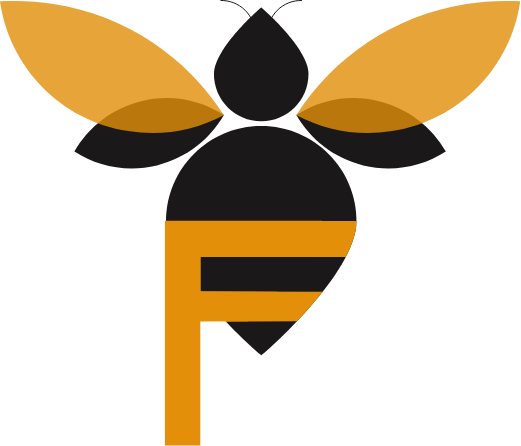The best way to help bees is to plant flowering plants which will not only support bees but help all pollinators. The most important time to provide forage for bees is early spring and late autumn. Below we have listed of some of the plants that are beneficial for bees at different times of the year.
The RHS also offer advice on plants for pollinators.
forage for december and january
Trees:
Cornelian Cherry (Cornus mas)
Hazel (Corylus avellana) – catkins should bear pollen in January
Winter cherry (Prunus subhirtella autumnalis)
Shrubs:
Camellia Sasanqua – winter flowering camellia
Camellia japonica- early varieties should be out in January
Christmas box (Sarcococca) hopefully its scent will fill the air by Christmas.
Colletia armata
Coronilla Valentina
Daphne Bholua – highly scented, should flower in January
Hebe – some varieties flower all winter.
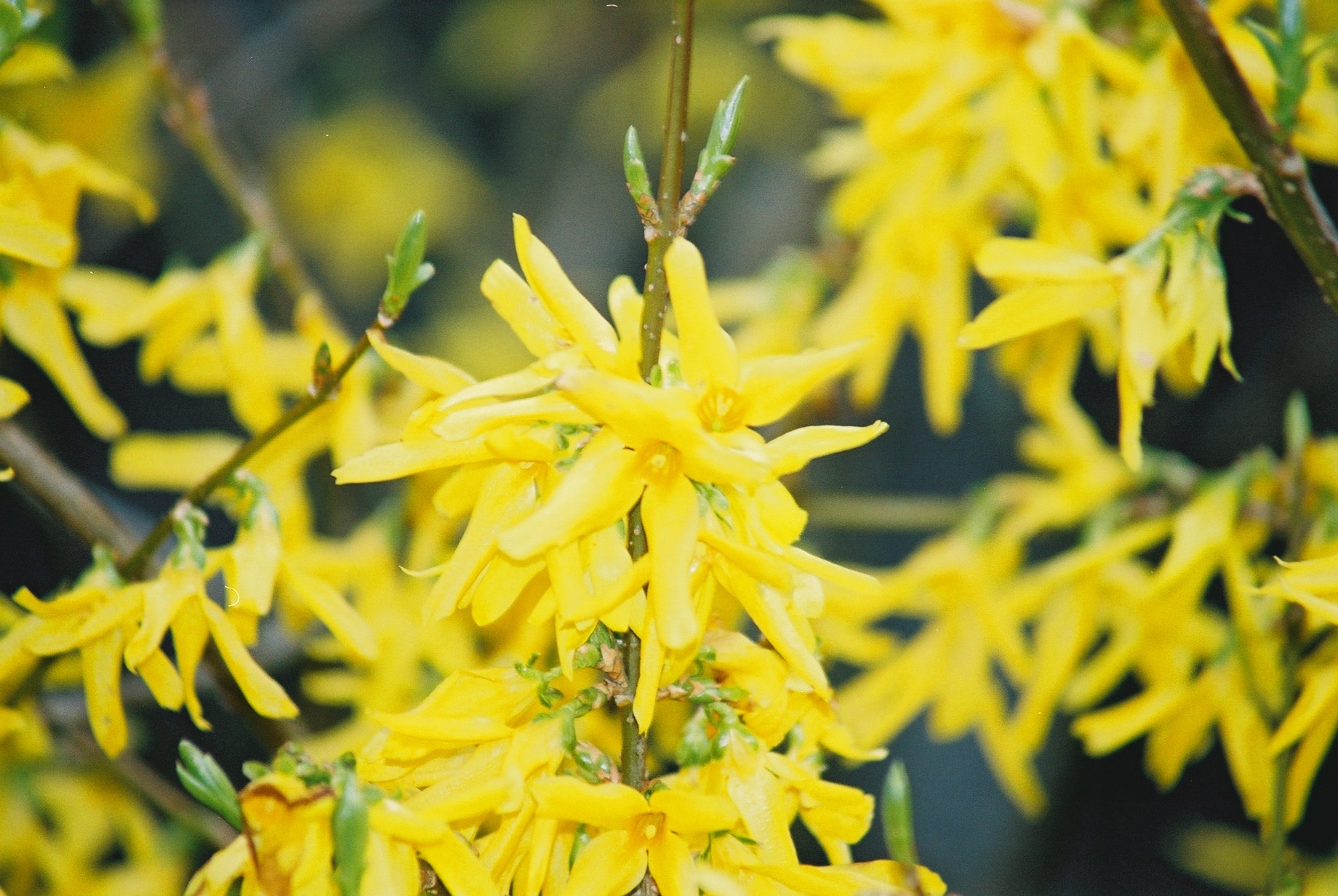
Japanese Aralia (Fatsia japonica)
Mahonia – Some varieties flower in December, and others
should flower until March
Viburnum – V. Bodnantse and V. Tinus both flowering now.
Winter Honeysuckle (Lonicera Purpusii and L. Fragrantissima)
Winter Jasmine (Jasminium Nudiflorum)
Wintersweet, (Chimonanthus praecox) very highly scented
Witch hazel (Hamamelis) should start to open in January
Climbers:
Clematis Cirrhosa – variety Freckles should flower in December
Perennials:
Heathers (Erica carnea and E. darleyensis) winter flowering varieties out now
Hellebores – start to come into flower in January
Periwinkle – (Vinca difformis) flowers all winter
Snowdrops (galanthus) hopefully early January
Winter Iris (Iris unguicularis) January
Herbs:
Rosemary
forage for february
Trees:
Hazel (corylus avellana)
Magnolia – the early varieties are coming into bud, and will flower this month, if not hit by frost
Willow (Salix)- many varieties come into flower in February- a good source of pollen
Winter cherry (prunus x subhirtella autumnalis
Shrubs:
Many of these shrubs have small insignificant flowers,
but are highly scented:
Camellia japonica –
Cornelian Cherry (Cornus mas)
Christmas box (Sarcococca) –
Daphne mezereum – very sweetly scented
Edgeworthia chrysantha
Japanese flowering apricot (Prunus mume Benichidori)
Mahonia
Ornamental, or Japanese quince (Chaenomeles)
Viburnums – several varieties in flower
Wintersweet (Chimonanthus praecox)
Winter honeysuckle (Lonicera fragrantissima), L.
purpusii Winter Beauty, and L. standishii all strongly
scented
Witch hazel (Hamamelis) with a strong scent, many
varieties and colours
Perennials & Bulbs:
Anemone blanda
Crocuses
Cyclamen hederifolium
Daffodils
Heather (Erica) – winter flowering E. Carnea and E.
Darleyensis continue to flower
Hellebores, x hybridus, H. niger, H. argutifolius, H.
foetidus, and H. sternii all flowering now.
Periwinkle (Vinca difformis).
Primroses (Primula vulgaris)
Snowdrops (Galanthus nivalis)
Winter Aconite (Eranthis hyemalis)
Forage for March
Trees:
Magnolia – the early varieties are coming into bud, and will flower this month, if not hit by frost
Willow (Salix)- many varieties start to flower in February- a good source of pollen
Winter cherry (prunus x subhirtella autumnalis) and other small flowered cherries
Shrubs:
Blackthorn/sloe (prunus spinosa) very common along the roadsides
Box (buxus sempervirens)
Camellias, the more open flowered varieties display stamens. Different varieties are in flower from November to May, but this is the peak season.
Cherry plum (prunus cerasifera)
Daphne mezereum, very strong scent
Flowering currant (ribes sanguinum) It is said when
this flowers the beekeeping season has begun!
Kerria japonica – (not the more common double K. jap. pleniflora) – only the single variety is any good for the bees
Mahonias, some late varieties are still flowering,
Osmanthus Burkwoodii – very sweetly scented
Rosemary
Viburnum tinus and V. bodnantense Dawn
Yew (taxus baccata)
Annuals and Biennials
Wall flowers (erysimums)
Perennials & Bulbs:
Crocus
Daffodil
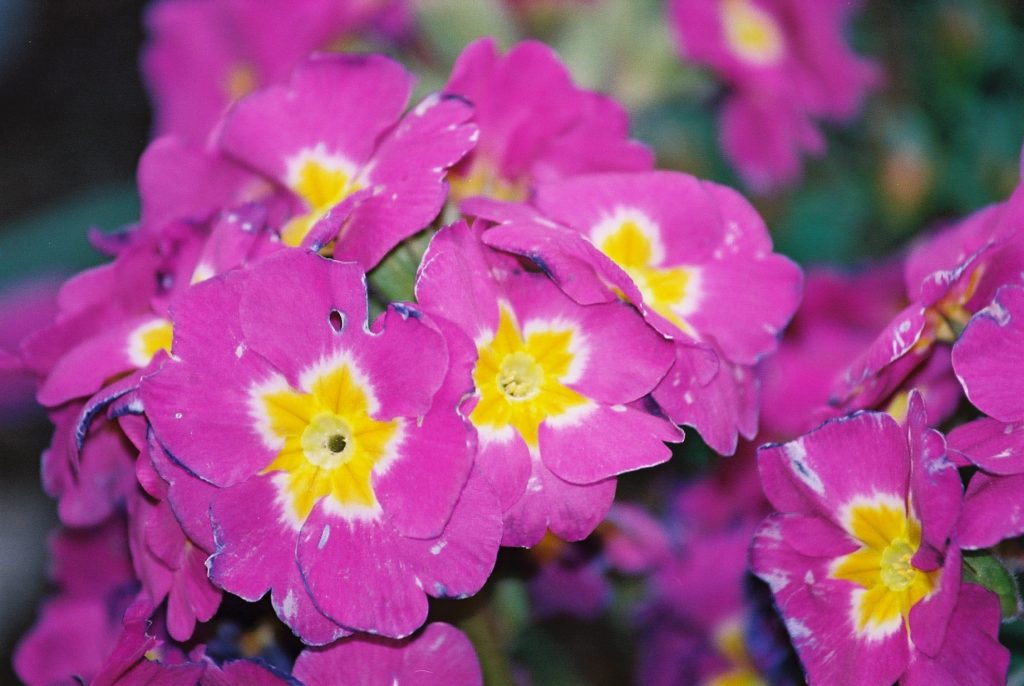
Grape hyacinths (muscari) Heather (erica carnea and erica x darleyensis) winter flowering heathers are still blooming well .
Hellebores
Pulmonaria (Raspberry Ripple amongst others)
Scillas
Species Tulips – eg. T. turkestanica -the smaller species varieties flower early
Spring snowflake (leucojum vernum)
Wallflowers (perennial erysimums) E. Bowles mauve.
Winter aconites (eranthis hyemalis)
Wild flowers:
Celandines (ranunculus ficaria)
Gorse (ulex) this flowers most months of the year.
Primroses (primula vulgaris)
Forage for April
Trees:
Birch (betula) no nectar, pollen only
Cherries (prunus) many flowering varieties
Fruit trees, – apples, pears, cherries and plums
Horse chestnuts (aesculus hippocastanum)
Snowdrop tree (Halesia) should be in flower later this month
Shrubs:
Berberis darwinii
Blackthorn/sloe (prunus spinosa) has been flowering
for some time.
Camellias
Coronilla
Daphne mezereum
Flowering currants (ribes sanguineum).
Laurel (prunus laurocerasus)
Magnolias
Mahonias, some varieties are still flowering
Pieris
Rhododendron
Rosemary
Annuals and biennials
Wallflowers (erysimums)
Perennials & Bulbs:
Daffodil (narcissus)
Grape hyacinths (muscari)
Lungwort (pulmonaria)
Primulas
Scillas
Spring snowflake (leucojum vernum) – like a 60cm (2ft)
snowdrop!
Tulips – early varieties, Kaufmanniana and Griegii, and
smaller species tulips such as tulipa turkestanica
Wild flowers:
Broom (cytisus scoparius)
Celandines (ranunculus ficaria)
Cowslips (primula veris)
Daisies (bellis perennis
Dandelions (taraxacum officionale) – a very important food source for bees
English Bluebells (hyacinthoides non-scripta)
Fritillarias – meleagris and snakeshead
Gorse (ulex europaeus)
Kingcups/marsh marigolds (Caltha palustris)
Primroses (primula vulgaris)
Forage for May
Trees:
Apples (malus domesticus)
Buckeye (Aesculus) the North American equivalent of our Horse Chestnut
Crab apple (malus sylvestris ) often used as a pollinator for domestic apples
Eucalyptus – some varieties are flowering now.
Horse chestnuts (Aesculus hippocastanum)
Pears (pyrus)
Sycamore (Acer pseudoplatanus).
Shrubs:
Berberis
Ceanothus – early varieties are out now
Cotoneasters – there are many varieties
Currant fruit bushes – black, red and white (ribes nigrum, ribes rubrum)
Hawthorn (crataegus monogyna)
Holly (ilex aquifolium) – the male trees have pollen and the female trees have the nectar.
Magnolias
Quince (cydonia oblinga)
Raspberries (rubus idaea)
Rhododendrons – (including azaleas) many varieties
Rosemary
Roses early varieties with open flowers such as Canary Bird
Tree peonies (Paeonia suffruticosa)
Annuals and biennials
Broad beans (vicia faba)
Wallflowers (erysimum)- these occur as biennials as well as
perennial
Perennials:
Alliums
Dead nettle (lamium)
Peonies (paeonia lactiflora) – open flowered varieties
Poppies (papaver rhoeas and p. somniferum)
Strawberries (fragaria)
Thrift or sea pink (Armeria))
Thyme
Wallflowers (Erysimums) – short lived perennials
Climbers:
Clematis
Wisteria – w. floribunda and w. sinensis
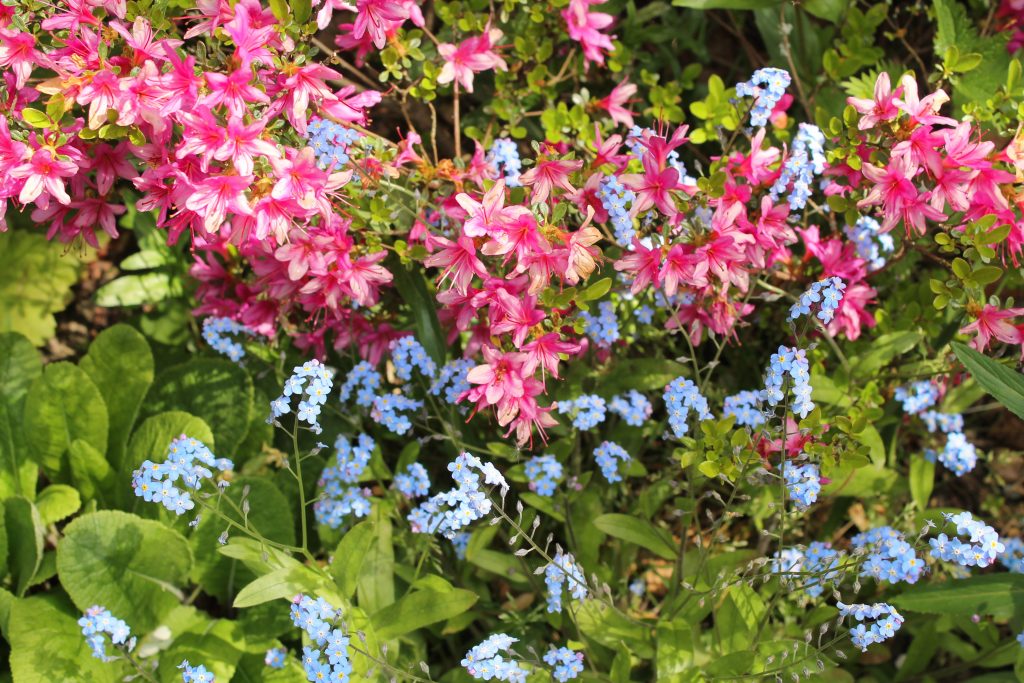
Wild flowers:
Bluebells (hyacinthoides non-scripta)
Broom (cytisus scoparius)
Cowslips (primula veris)
Daisies (bellis perennis)
Dandelions (taraxacum officionale)
Forget-me-nots (myosotis scorpiodes)
Garlic mustard, aka Jack-by-the-hedge (Alliaria petiolata)
Gorse (ulex europaeus)
Lily of the valley (convallaria majalis)
Primroses (primula vulgaris)
Welsh poppy (meconopsis cambrica)
Forage for June
Trees:
Elder (sambucus nigra)
Laburnum,
Lime (tilia)
Medlar (mespilus germanica)
Shrubs:
Abelia
Abutilon vitifolium
Buddleia globosa and B. davidii
Ceanothus
Cotoneaster
Clematis, early and mid season cultivars
Deutzia
Dogwood (cornus)
Lavender
Mock orange (philadelphus)
Photinia
Pyracantha
Raspberries
Rhododendrons (later varieties )
Roses (single flowered varieties)
Viburnums
Weigelia
Annuals and biennials
Broad beans (Vicia faba)
Marigolds, (calendula officinalis)
Poppies – Welsh poppy (meconopsis cambrica) and opium
poppy (papaver somniferum)
Thistles (onopordum acanthium)
Perennials:
Alliums
Aquilegia
Dianthus
Geraniums (hardy) eg. g. Anne Folkard, g. phaeum and the taller, g. palmatum
Iris
Oriental poppies (papaver orientale) single cultivars only
Paeonies single flowered varieties
Salvias- many varieties in bloom
Strawberries
Sunroses (helianthemum)
Wallflowers (erysimums) Bowles Mauve and other fairly short lived varieties
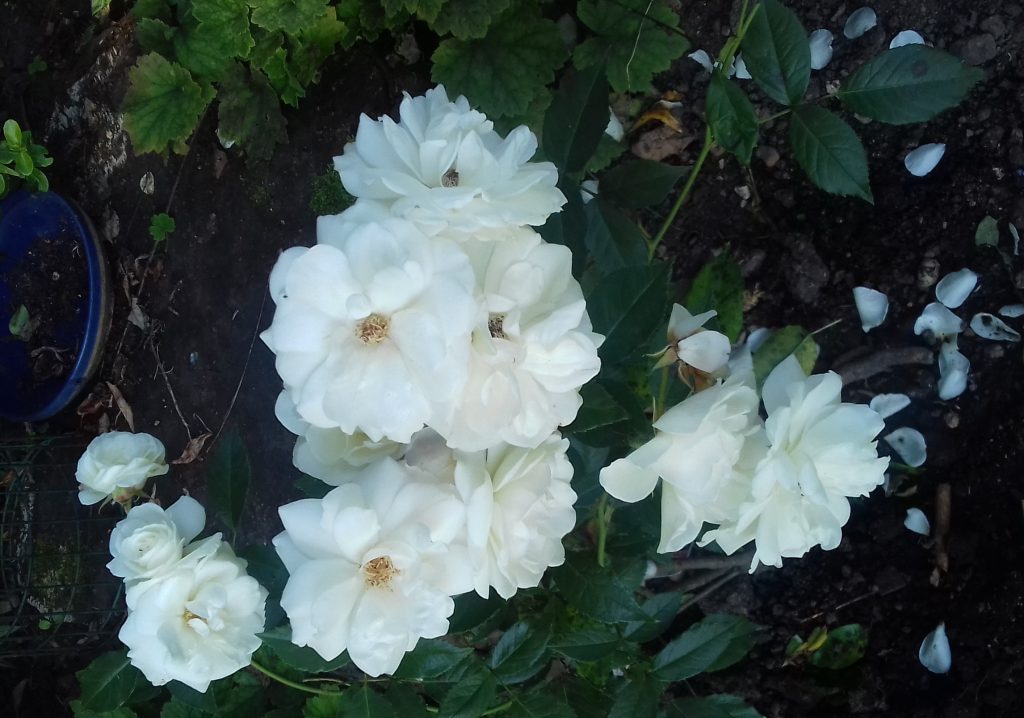
Wild flowers:
Blackberries (rubus fruticosa)
Buttercups (ranunculus acris)
Cow parsley (anthriscus sylvestris) – pollinated mostly by hoverflies.
Foxgloves (digitalis)
Orchids, early purple (orchis mascula)
Oxeye daisies (leucanthemum vulgare)
White clover (trifolium repens)
Forage for July
Trees:
Eucryphia
Golden rain tree (koelrueteria paniculata)
Indian bean tree (catalpa bignonoides)
Lime (tilia)
Stewartia Pseudocamellia
Sweet chestnut (castanea sativa)
Shrubs & Climbers:
Buddleias, many varieties
Escallonias
Honeysuckle (lonicera)
Lavender
Perennial pea (lathyrus latifolia)
Jerusalem sage (phlomis fruticosa)
Raspberries (rubus idaeus)
Summer jasmine (jasminum officinale)
St John’s wort (hypericum)
Annuals and biennials
Borage
Lobelia
Marigolds (calendula)
Ornamental poppies (papaver somniferum or opium
poppy, and papaver orientalis
Sunflowers (helianthus)
Tomatoes
Perennials:
Catmint (nepeta species)
Cone flower (echinacea)
Geraniums -hardy varieties are popular with bees.
Inula hookeri
Rock roses (helianthemum)
Salvias many garden varieties
Spiked speedwell (veronica spicata)
Strawberries
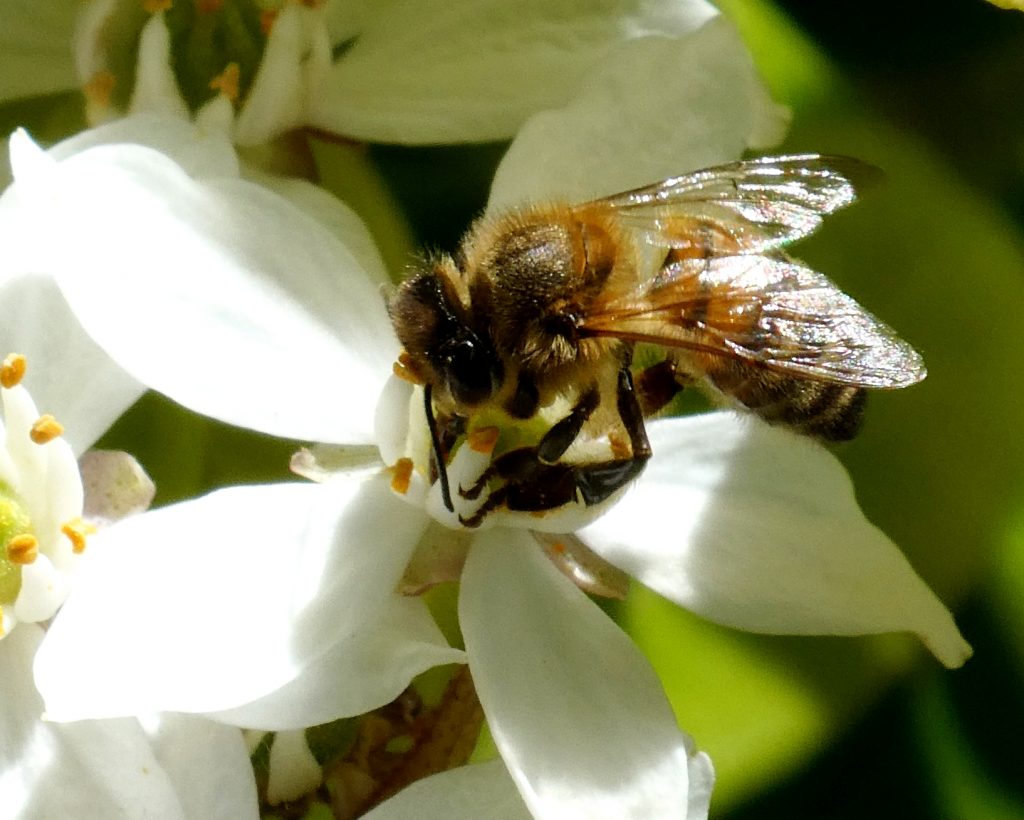
Wild flowers:
Blackberries (rubus fruticosus),
Field poppies (papaver rhoeas) – Black pollen
Lawn daisies (bellis perennis)
Orchids including the spotted common
Oxeye daisies (leucanthemum vulgare) – If the councils do not “tidy up” the verges
Ragged Robin (lychnis flos-cuculi)
Yellow rattle (rhinanthus minor)
Himalayan Balsam (impatiens glandulifera) – an
invasive weed, but bees love it)
FORAGE FOR AUGUST
Trees:
Golden rain tree (Koelreuteria) in flower at the end of July, should continue into August if not too hot.
Eucryphia is still in flower
Shrubs:
Butterfly bush (Buddleia)
Californian lilac – (Ceanothus)
Hebe
Hydrangea,
Mallow (lavatera)
Roses, single varieties
Perennials:
Anise hyssop (Agastache)
Dahlias with open centres such as
Bishop of Llandaff.
Eupatorium
Geraniums, (hardy perennials)
Globe thistle (echinops)
Golden Rod (solidago)
Helenium
Mallow (malva)
Michaelmas daisies – (formerly Asters now Symphyotrichum).
Myrtle (Myrtus Communis)
Marjoram (Origanum)
Sea Holly (Eryngium)
Sedums (renamed Hylotelephium)
Salvias
Veronicas
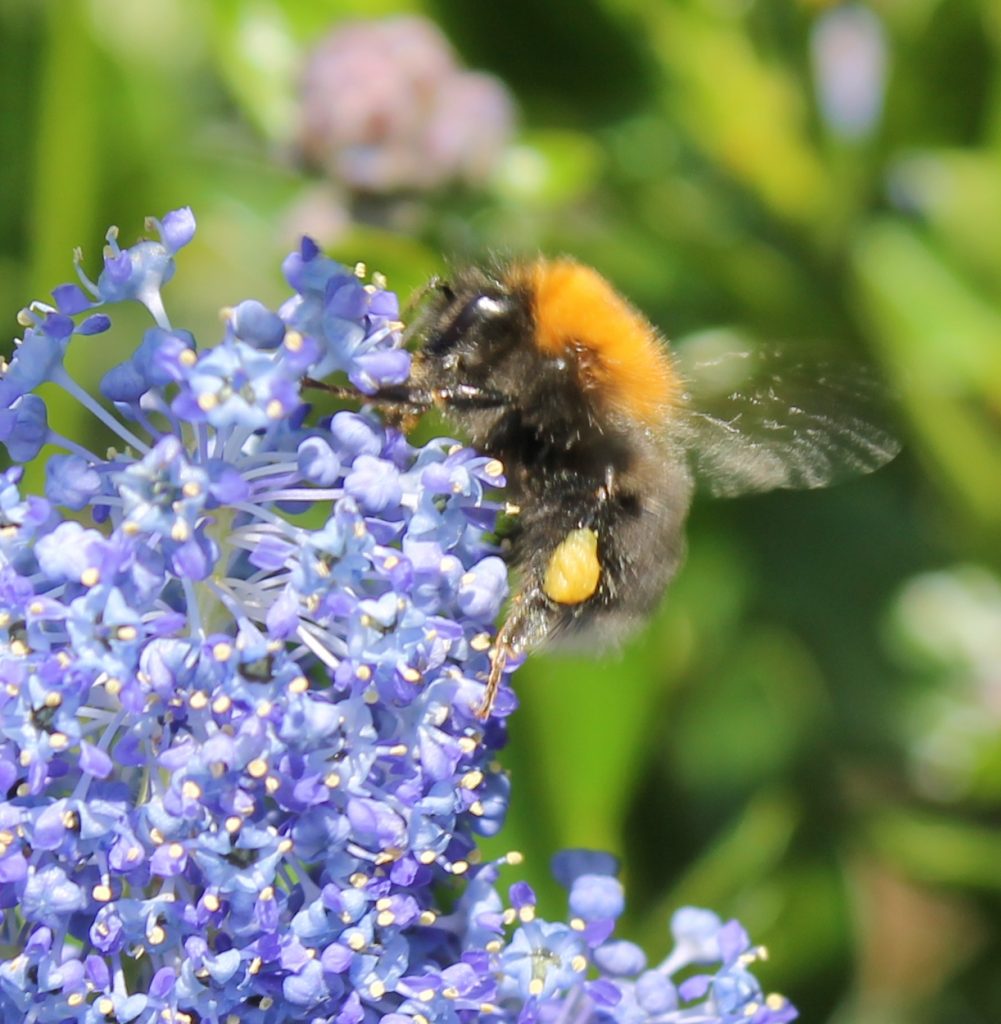
Wild flowers:
Birdsfoot trefoil, (lotus corniculatus)
Devil’s-bit scabious (succisa pratensis)
Evening primrose (oenothera biennis)
Great willowherb (epilobium hirsutum),
Himalayan balsam, (impatiens glandulifera). Bees love it and return dusted with white pollen, but it is now recognised as an invasive non-native species.
FORAGE FOR SEPTEMBER
Trees:
Most of the trees have finished flowering by now and the berries and fruit are left
Shrubs:
Abelia
Buddleias, several varieties attracting butterflies and
many other insects
Caryopteris x clandonensis
Plumbago (Ceratostigma plumbaginoides)
Fuchsias, many varieties, some are not frost hardy
Hydrangea paniculata
Myrtle (Myrtus communale)
Raspberries, autumn fruiting varieties
Yucca
Perennials:
Just a few of the many varieties out now:
Autumn crocus -bulb – aka “naked ladies” (colchicum
autumnale)
Chrysanthemum
Clematis – late flowering varieties which need cutting
down to 30cm in February
Cyclamen hederifolium
Dahlias single flowered varieties
Echinacea purpurea, many varieties
Globe thistle (echinops)
Heathers (Watch out for heather honey in the supers!)
Helenium
Helianthus lemon queen is still flowing well
Michaelmas daisies (formerly asters, now known as
Symphyotrichtum)
Monarda Osteospermum
Persicaria
Red valerian (centranthus ruber)
Rudbeckia
Salvia
Sedum (now renamed hylotelephium!)
Verbascum
Annuals and Biennials:
Gypsophila elegans
Lavatera trimestris
Marigolds, calendulas and other varieties, all good at
seeding themselves
Scabious
Wild flowers:
Clover (trifolium)
Evening primrose (oenothera biennia)
Great willow herb (epilobium hirsutum)
Ivy (hedera helix) many varieties will flower until November
